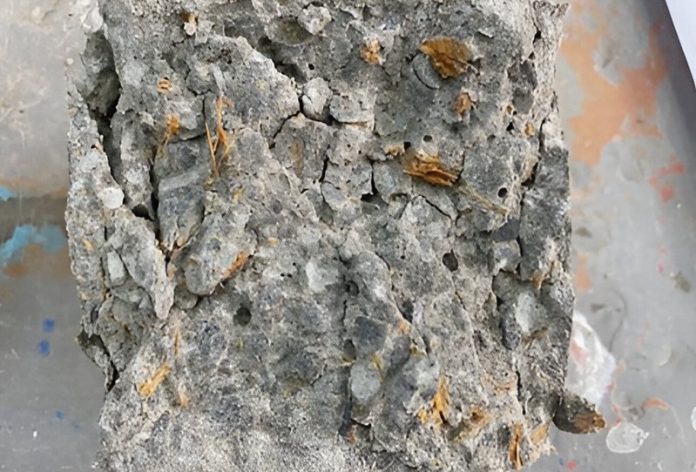
Imagine building super sturdy houses using… coconuts! Sounds a bit nutty, doesn’t it?
But scientists have discovered that coconut shells might actually be a secret ingredient to make concrete (the stuff used to build houses and buildings) even tougher!
What’s the big deal with concrete?
Concrete is like the chocolate cake of construction.
Just as flour, eggs, and sugar are crucial for your cake, concrete is essential for building!
It needs to be strong and durable to support big buildings and keep them standing tall. But what if we could make it even better with a sprinkle of something extra?
Coconuts join the construction party
Coconut shells, often discarded or burnt after the tasty white part is used, are now becoming surprising heroes in this story.
Scientists from Don State Technical University decided to play around a bit and mix coconut shells into the concrete. And guess what? When just a tiny bit (5%) of coconut shell was mixed into the concrete, it became stronger!
This isn’t just about coconuts showing off though. By figuring out how to use coconut shells in this way, we could potentially recycle loads of them, which is great news for our planet. Plus, it’s an excellent way to enhance the quality of building materials.
So, how did coconuts make a difference?
When they added 5% of coconut shell into the concrete:
- The compressive strength (how much squeezing it can handle before cracking) increased by 4.1%.
- The flexural strength (its ability to bend slightly without breaking) went up by 3.4%.
And that’s not all! The overall performance of the material jumped up by 6.1% compared to the regular concrete. How did the coconuts manage this?
Well, the cement paste, which glues all the solid bits in concrete together, snuck into the pores (tiny holes) in the coconut shell, making a super-strong bond with the other ingredients.
But wait, there’s a catch
While a little coconut made things better, using too much didn’t work out so well. When they tried adding a whole lot more coconut shell (up to 30%), the concrete’s strength actually went down by 41.4%.
It turns out, coconut shell, while having its benefits, isn’t as robust as sandstone, which is typically used in concrete.
The future is nutty and bright!
Looking forward, the scientists are bubbling with excitement and have their eyes set on exploring even wilder ideas! Imagine concrete mixed with sunflower husks or even jellyfish!
While that might sound like a peculiar menu, it’s actually a glimpse into a future where our buildings and structures might be crafted using some unexpected ingredients from Mother Nature.
Sergey Stelmakh, a top researcher from Don State Technical University, is eager to dive deeper into understanding how different natural leftovers, from the land and sea, might find a new purpose in strengthening our buildings, all while keeping things eco-friendly.
This exciting research journey is like a delightful recipe book being written, where the ingredients are as surprising as they are innovative.
It’s all about blending sustainability with strength, so our future buildings are not just sturdy and safe but also kinder to our planet. So the next time you crack open a coconut, just imagine: you might be holding a piece of a future skyscraper in your hand!
Follow us on Twitter for more articles about this topic.
Source: Russian Foundation for Basic Research.



